[TTA][CLS] On Pitfalls of Test-Time Adaptation
[TTA][CLS] On Pitfalls of Test-Time Adaptation
- paper: https://arxiv.org/pdf/2311.16102.pdf
- github: https://github.com/LINs-lab/ttab
- NeurIPS 2023 accepted (인용수: 12회, ‘23.12.30 기준)
- downstream task: TTA for CLS
1. Motivation
- 기존 TTA 방식들에 대해 일관된 setting으로 비교하지 못하고 있음
- Systematical한 study가 없었음
- 기존 TTA 10개 algorithm을 분석한 결과, 세 가지 문제를 발견했음
2. Contribution
- 10개의 최신 TTA를 포함하며, 다양한 distribution shift와 2가지 evaluation protocol를 포함한 Test-Time-Adaptation Benchmark (TTAB)를 제안함
- 기존 TTA 들의 세 가지 범주의 문제점(pitfalls)을 지적함
- Online batch에 따라 종속적으로 성능이 변화하기 때문에 적절한 hyper-parameter를 선택하기가 엄청 어렵다.
- learning rate
- adaptation step 갯수
- pretrain weight를 뭐로 선택할지
- Pretrained weight의 quality에 따라 TTA의 최종 performance에 많은 영향을 끼치게 됨
- norm layer에 따른 성능 변화 (batch norm $\to$ group norm / laryer norm)
- auxiliary training objectives를 함께 학습함에 따른 성능 변화
- data augmentation에 따른 성능 변화
- Distribution shift를 모두 반영하지 못함
- spurious correlation
- label shift
- non-stationary shift
- Online batch에 따라 종속적으로 성능이 변화하기 때문에 적절한 hyper-parameter를 선택하기가 엄청 어렵다.
- 기존 TTA 들의 세 가지 범주의 문제점(pitfalls)을 지적함
3. TTAB (TTA-Benchmark)
-
10가지 기존 TTA 방식들의 실험 환경 정리

- 제안한 방식의 유효성을 각기 다른 환경에서 실험하고 있으므로, 적절한 비교하기 어려움
-
TTAB benchmark의 특징
-
기준이 되는 setting 제안함
-
dataloader 등 통일
-
attribute에 따른 손쉬운 data distribution 정의
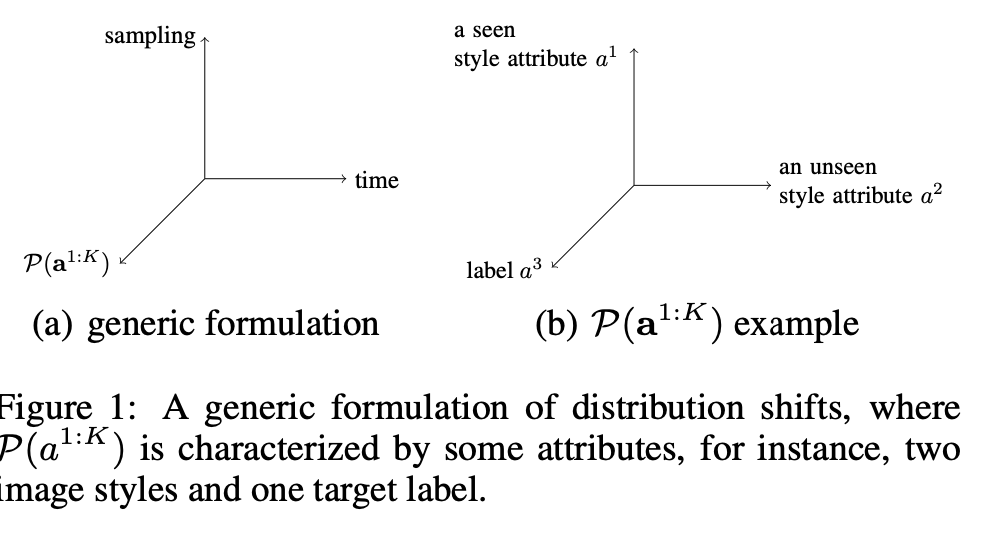
-
-
확장 가능한 baseline들 $\to$ 표 1 참고
-
4. Experiments
4.1 Batch Dependency Obstructs TTA Tuning
-
Hyperparameter에 너무 sensitive하다. 특히 learning rate와 number of adaptation steps
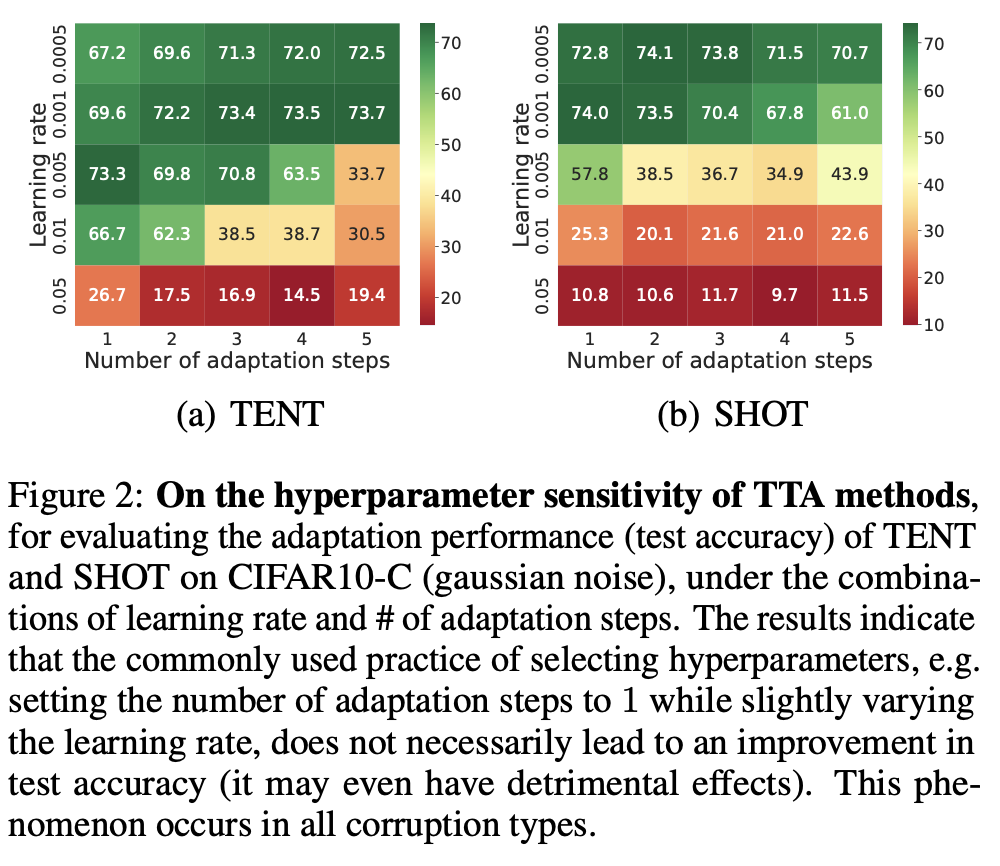
-
number of step=1일때, Learning rate에 따라 TTA 성능이 sensitive하게 달라지는 모습
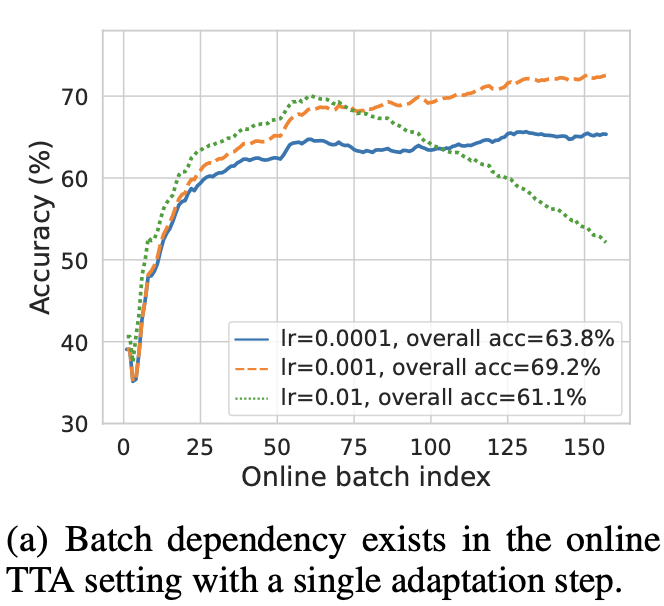
-
좋은 learning rate (1e-3)을 안다고 쳐도, number of adatation step에 따라 over-adatation되어 언제 끊을지 어려움
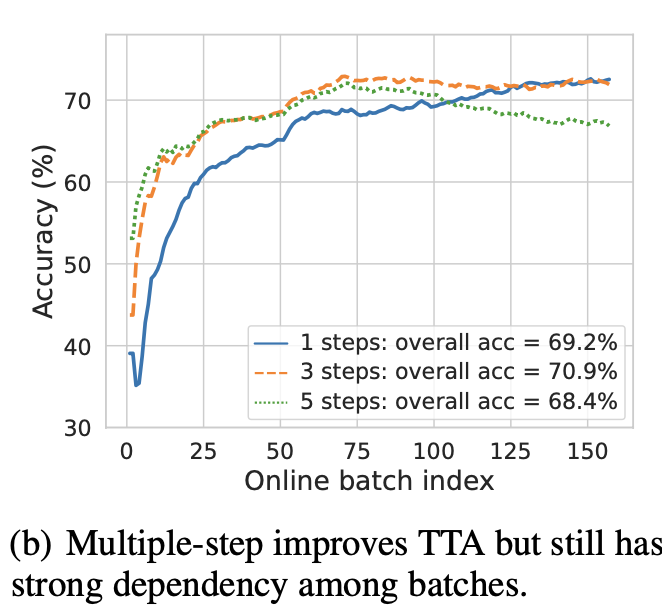
-
심지어, test data의 label를 써서 early stopping해서 얻은 oracle 모델로 adaptation해도 그건 마찬가지

- M: adaptation step의 max값. 50으로 실험적으로 결정 (large dataset은 시간상 25)
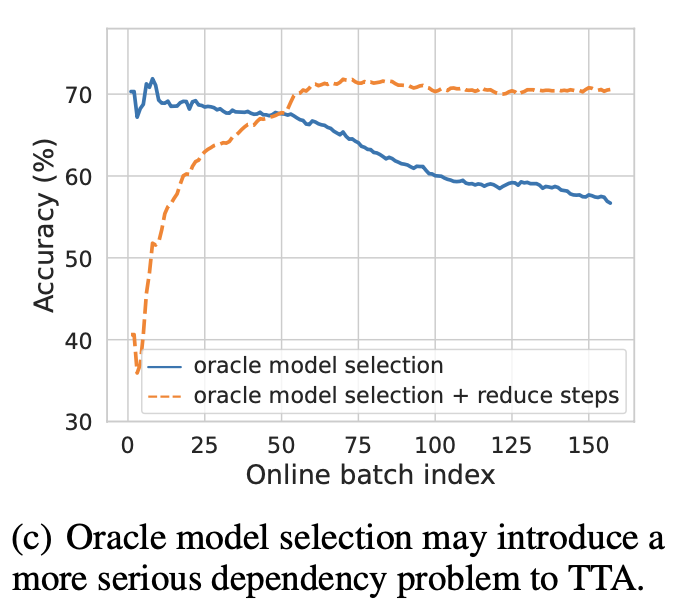
-
Auxiliary Regularization을 통한 adaptation 수행할 때도 비슷한 양상이 보임
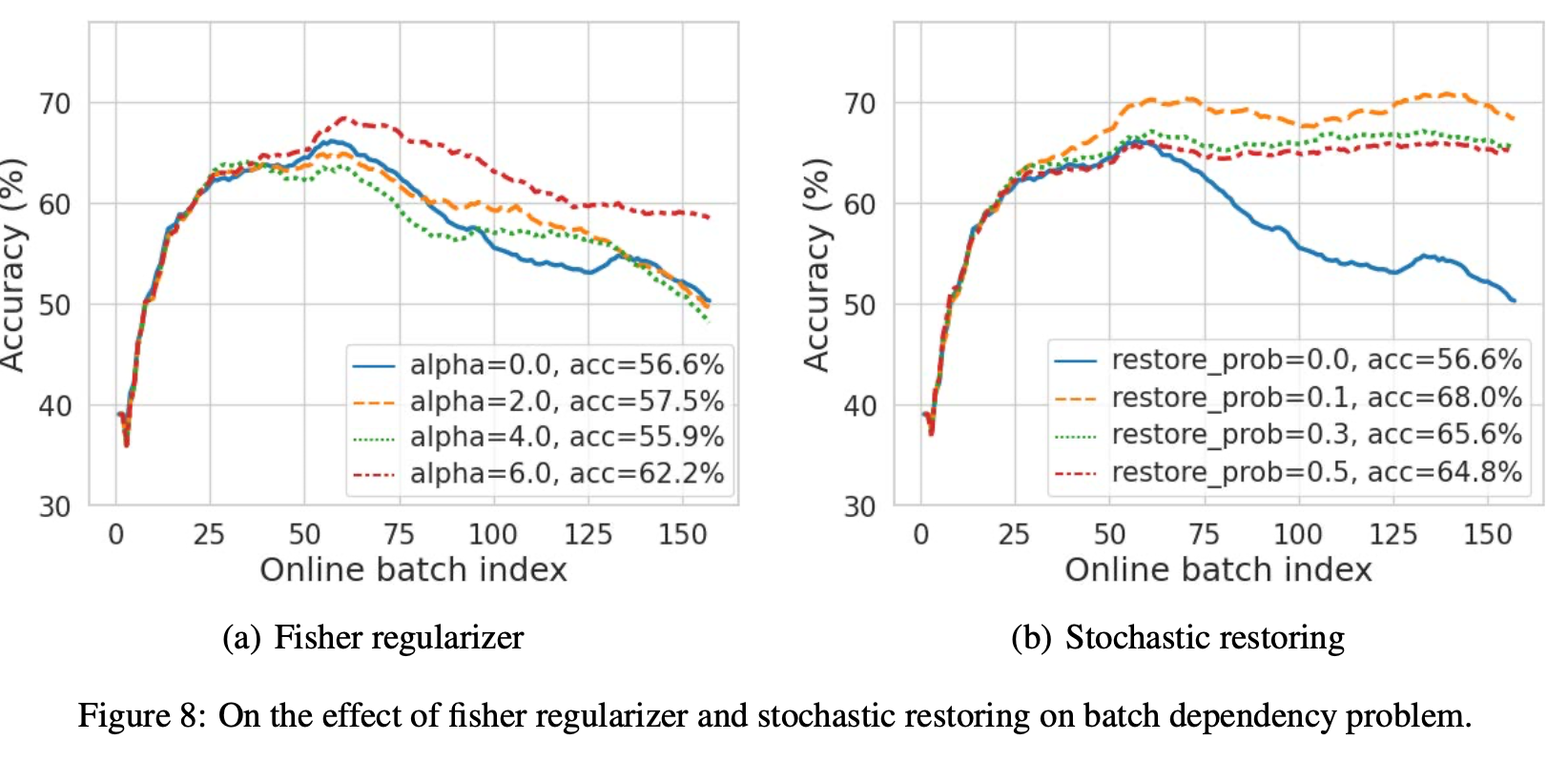
- Fisher regularizer
- stochastically restoring
4.2 Pre-trained Model Bottlenecks TTA Efficacy
-
Pre-trained Model이 어떤 성능을 내느냐에 TTA가 좌우됨
-
feature extractor & classification head & data augmentation에 따른 disentangled된 비교를 수행함
-
feature extractor

- feature extractor는 freeze하고 classification head만 adapt
- 초기 Test data (OOD)에서 좋은 성능을 내는 모델이 TTA after adapt이후에도 좋은 성능을 냄
- 위 결과는 Oracle Model Selection으로 구한 수많은 모델을 대상으로 실험
- 실험 결과는 강력한 feature extractor가 TTA에 매우 중요한 영향력을 준다고 볼 수 있음
-
classification head
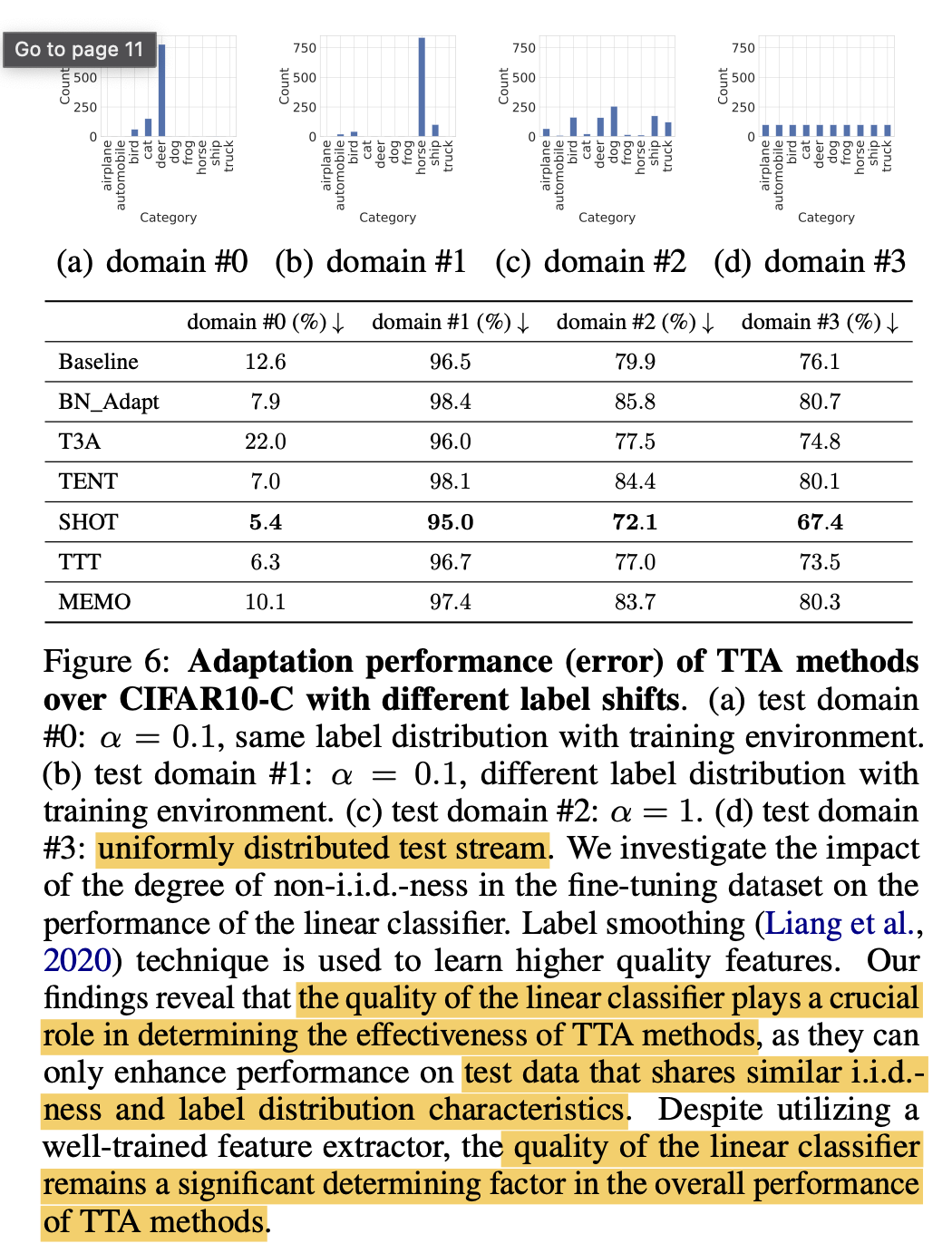
- train /test data 분포에 따른 성능 비교를 수행함
- train의 분포와 같은 test 분포에서만 유의마한 결과 (SHOT 5% error)가 나오고, 나머지는 모두 random 예측보다 못한 결과를 출력함
- 이는 classification head가 매우 중요한 역할을 한다고 볼 수 있음
-
data augmentation
-
no augmentation / standard augmentation (random crop & horizontal flip) / mixup / pixmix 비교
-
오른쪽으로 갈수록 augmentation이 심해짐
-
OOD 에서 좋은 결과를 냈다고, TTA adaptation이후 좋은 성능을 내지 않았음
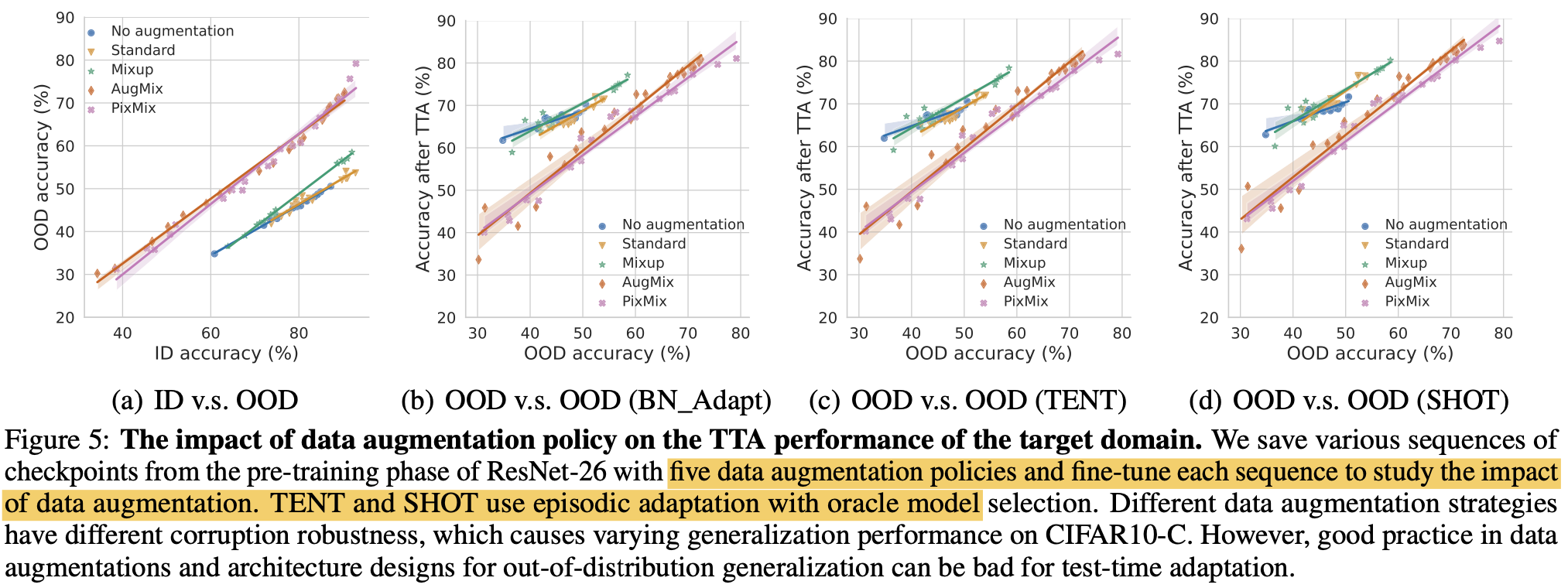
- (a)에서는 PixMix, AugMix > No aug, Standard, Mixup
- (b)에서 adapt 이후 No aug, Standard, Mixup > PixMix, AugMix
- 이는 BN_Adapt, TENT, SHOT에서 모두 동일하게 나타남
-
이는 ViT의 효율 극대화된 CCT에서도 동일하게 나타남
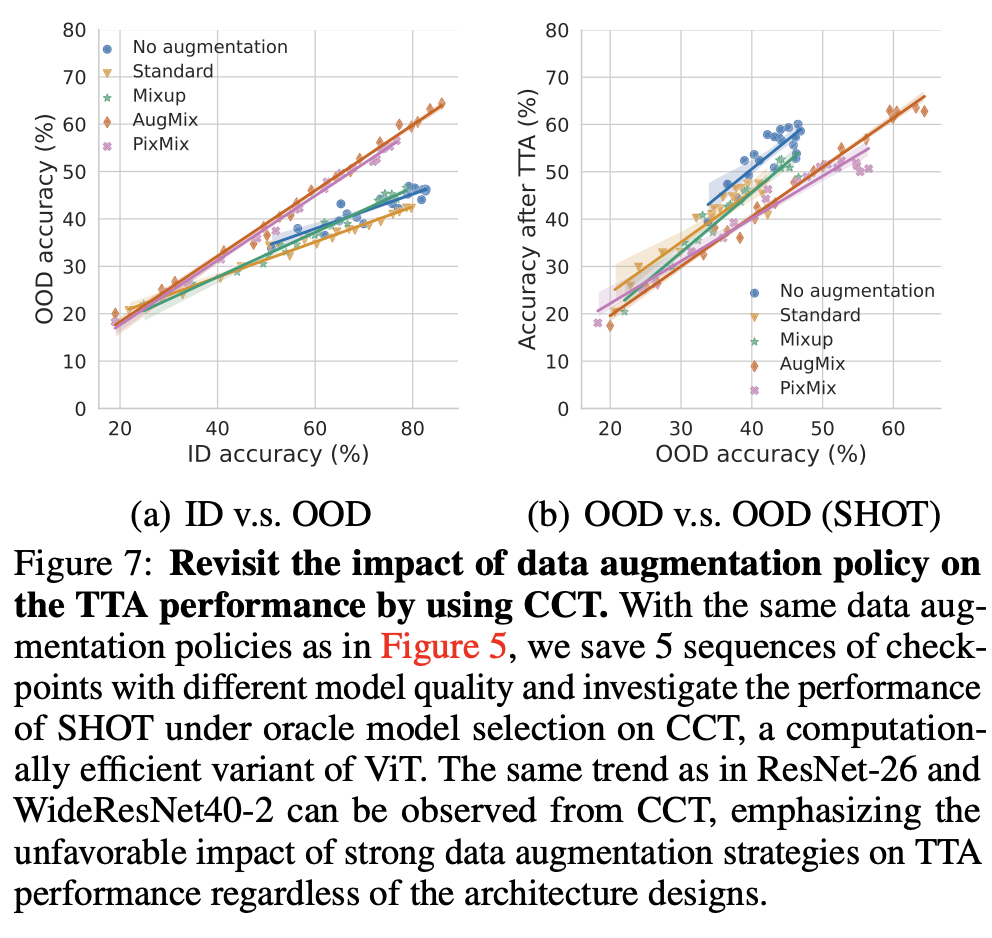
-
-
4.3 No TTA Method Migitage All Shifts Yet
-
Common distirbution shifts
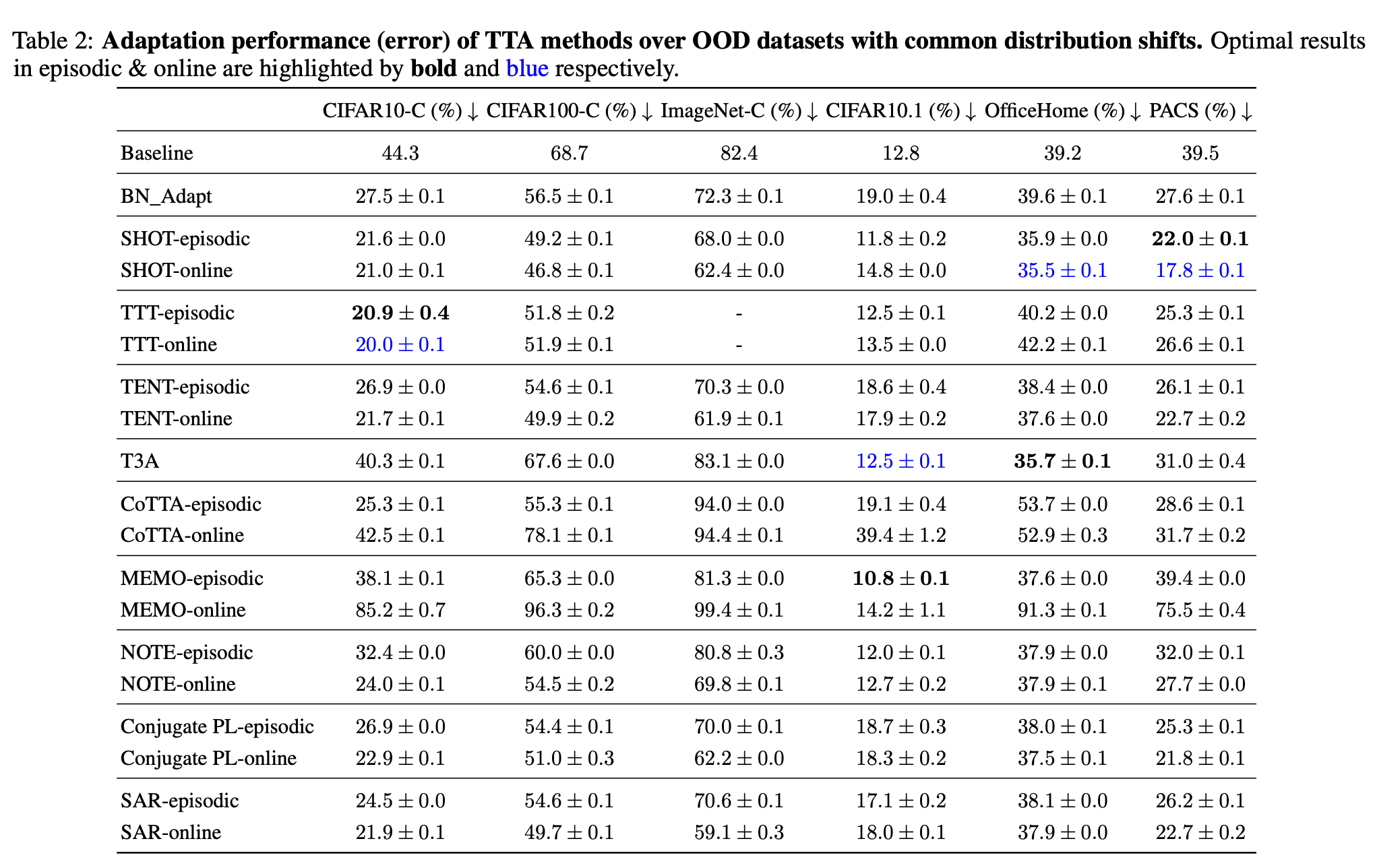
- synthetic, natural, domain generalization 에서는 모든 방법들이 adaptation후 성능 향상이 있었음.
-
Spurious correlation shifts & Label shifts
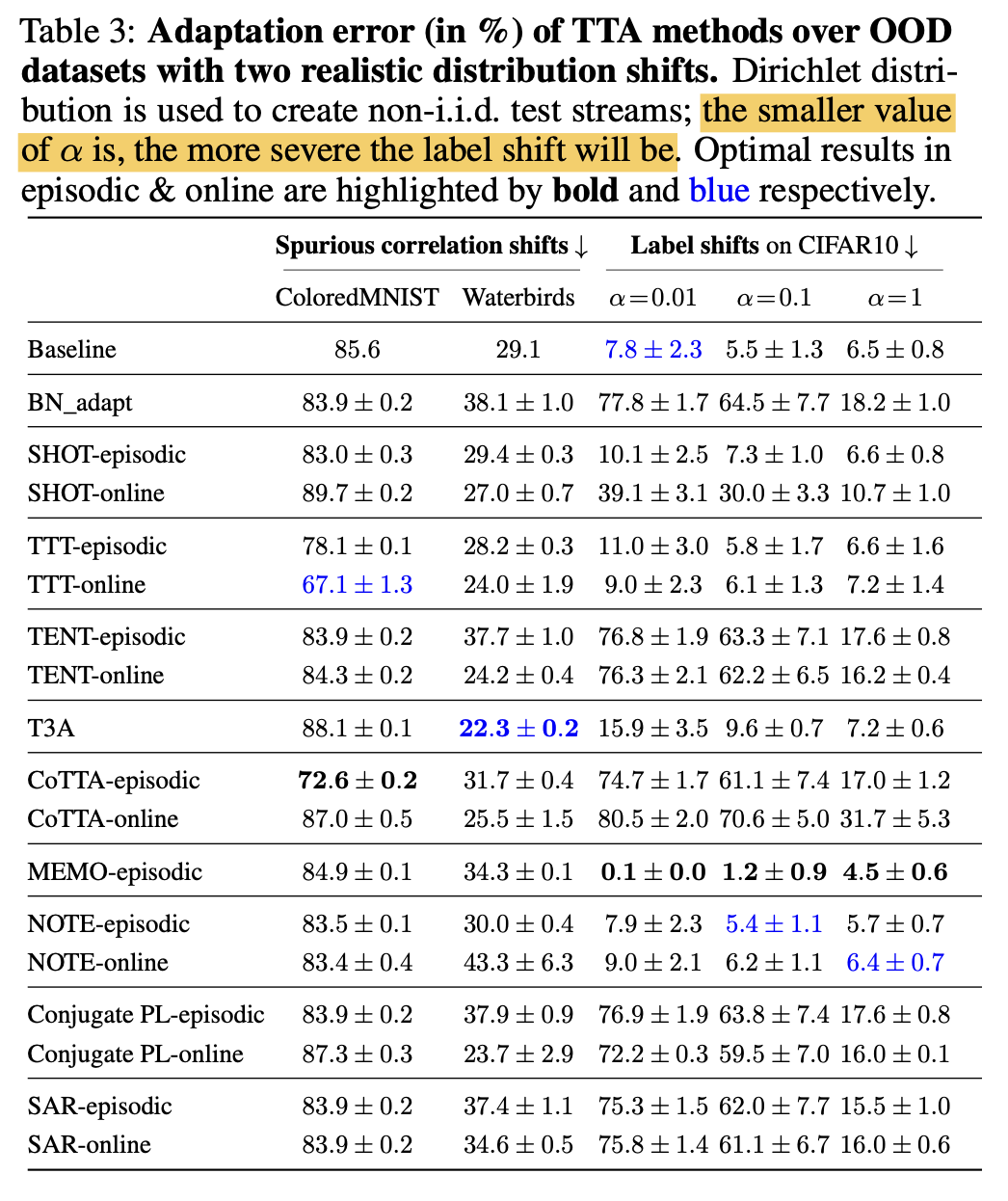
- ColoredMNist는 random 예측보다 못한 error를 보임.
-
Label shift는 기존에 CiFAR-10-C를 쓰는 방식은 label shift+co-variance shift 가 있는 상황이라 순수하게 label shift만 주기 위해 CiFAR0-10인데 dirihelet $\alpha$값만 달리 주는 실험 셋팅으로 진행함
-
Non-stationaory Shift

- Temporally correlated shift